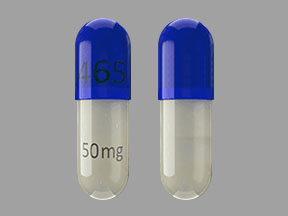Generic Mydayis Availability
Last updated on Apr 10, 2025.
Mydayis is a brand name of amphetamine/dextroamphetamine, approved by the FDA in the following formulation(s):
MYDAYIS (amphetamine aspartate; amphetamine sulfate; dextroamphetamine saccharate; dextroamphetamine sulfate - capsule, extended release;oral)
-
Manufacturer: TAKEDA PHARMS USA
Approval date: June 20, 2017
Strength(s): 3.125MG;3.125MG;3.125MG;3.125MG [RLD] [AB2], 6.25MG;6.25MG;6.25MG;6.25MG [RLD] [AB2], 9.375MG;9.375MG;9.375MG;9.375MG [RLD] [AB2], 12.5MG;12.5MG;12.5MG;12.5MG [RLD] [AB2]
Is there a generic version of Mydayis available?
A generic version of Mydayis has been approved by the FDA. However, this does not mean that the product will necessarily be commercially available - possibly because of drug patents and/or drug exclusivity. The following products are equivalent to Mydayis and have been approved by the FDA:
DEXTROAMP SACCHARATE, AMP ASPARTATE, DEXTROAMP SULFATE AND AMP SULFATE (amphetamine aspartate; amphetamine sulfate; dextroamphetamine saccharate; dextroamphetamine sulfate capsule, extended release;oral)
-
Manufacturer: SPECGX LLC
Approval date: August 31, 2023
Strength(s): 3.125MG;3.125MG;3.125MG;3.125MG [AB2], 6.25MG;6.25MG;6.25MG;6.25MG [AB2], 9.375MG;9.375MG;9.375MG;9.375MG [AB2], 12.5MG;12.5MG;12.5MG;12.5MG [AB2] -
Manufacturer: SUN PHARM INDS INC
Approval date: September 27, 2023
Strength(s): 3.125MG;3.125MG;3.125MG;3.125MG [AB2], 6.25MG;6.25MG;6.25MG;6.25MG [AB2], 9.375MG;9.375MG;9.375MG;9.375MG [AB2], 12.5MG;12.5MG;12.5MG;12.5MG [AB2] -
Manufacturer: TEVA PHARMS USA
Approval date: January 31, 2022
Strength(s): 3.125MG;3.125MG;3.125MG;3.125MG [AB2], 6.25MG;6.25MG;6.25MG;6.25MG [AB2], 9.375MG;9.375MG;9.375MG;9.375MG [AB2], 12.5MG;12.5MG;12.5MG;12.5MG [AB2]
Note: Fraudulent online pharmacies may attempt to sell an illegal generic version of Mydayis. These medications may be counterfeit and potentially unsafe. If you purchase medications online, be sure you are buying from a reputable and valid online pharmacy. Ask your health care provider for advice if you are unsure about the online purchase of any medication.
See also: Generic Drug FAQ.
Related patents
Patents are granted by the U.S. Patent and Trademark Office at any time during a drug's development and may include a wide range of claims.
-
Controlled dose drug delivery system
Patent 8,846,100
Issued: September 30, 2014
Inventor(s): Shojaei Amir & Read Stephanie & Couch Richard A. & Hodgkins Paul
Assignee(s): Shire LLCA multiple pulsed dose drug delivery system for pharmaceutically active amphetamine salts, comprising a pharmaceutically active amphetamine salt covered with an immediate-release coating and a pharmaceutically active amphetamine salt covered with an enteric coating wherein the immediate release coating and the enteric coating provide for multiple pulsed dose delivery of the pharmaceutically active amphetamine salt. The product can be composed of either one or a number of beads in a dosage form, including either capsule, tablet, or sachet method for administering the beads.
Patent expiration dates:
- August 24, 2029✓
- August 24, 2029
-
Controlled dose drug delivery system
Patent 9,173,857
Issued: November 3, 2015
Inventor(s): Shojaei Amir & Read Stephanie & Couch Richard A. & Hodgkins Paul
Assignee(s): Shire LLCA multiple pulsed dose drug delivery system for pharmaceutically active amphetamine salts, comprising a pharmaceutically active amphetamine salt covered with an immediate-release coating and a pharmaceutically active amphetamine salt covered with an enteric coating wherein the immediate release coating and the enteric coating provide for multiple pulsed dose delivery of the pharmaceutically active amphetamine salt. The product can be composed of either one or a number of beads in a dosage form, including either capsule, tablet, or sachet method for administering the beads.
Patent expiration dates:
- May 12, 2026✓
- May 12, 2026
More about Mydayis (amphetamine / dextroamphetamine)
- Check interactions
- Compare alternatives
- Pricing & coupons
- Reviews (144)
- Drug images
- Latest FDA alerts (4)
- Side effects
- Dosage information
- During pregnancy
- FDA approval history
- Drug class: CNS stimulants
- En español
Patient resources
Other brands
Professional resources
Other brands
Related treatment guides
Glossary
| Term | Definition |
|---|---|
| Drug Patent | A drug patent is assigned by the U.S. Patent and Trademark Office and assigns exclusive legal right to the patent holder to protect the proprietary chemical formulation. The patent assigns exclusive legal right to the inventor or patent holder, and may include entities such as the drug brand name, trademark, product dosage form, ingredient formulation, or manufacturing process A patent usually expires 20 years from the date of filing, but can be variable based on many factors, including development of new formulations of the original chemical, and patent infringement litigation. |
| Drug Exclusivity | Exclusivity is the sole marketing rights granted by the FDA to a manufacturer upon the approval of a drug and may run simultaneously with a patent. Exclusivity periods can run from 180 days to seven years depending upon the circumstance of the exclusivity grant. |
| RLD | A Reference Listed Drug (RLD) is an approved drug product to which new generic versions are compared to show that they are bioequivalent. A drug company seeking approval to market a generic equivalent must refer to the Reference Listed Drug in its Abbreviated New Drug Application (ANDA). By designating a single reference listed drug as the standard to which all generic versions must be shown to be bioequivalent, FDA hopes to avoid possible significant variations among generic drugs and their brand name counterpart. |
| AB | Products meeting necessary bioequivalence requirements. Multisource drug products listed under the same heading (e.g. identical active ingredients, dosage form, and routes of administration) and having the same strength (see Therapeutic Equivalence-Related Terms, Pharmaceutical Equivalents) generally will be coded AB if a study is submitted demonstrating bioequivalence. In certain instances, a number is added to the end of the AB code to make a three character code (e.g. AB1, AB2, AB7). Three-character codes are assigned only in situations when more than one reference listed drug of the same strength has been designated under the same heading. Two or more reference listed drugs are generally selected only when there are at least two potential reference drug products which are not bioequivalent to each other. If a study is submitted that demonstrates bioequivalence to a specific listed drug product, the generic product will be given the same three-character code as the reference listed drug it was compared against. |
Further information
Always consult your healthcare provider to ensure the information displayed on this page applies to your personal circumstances.

